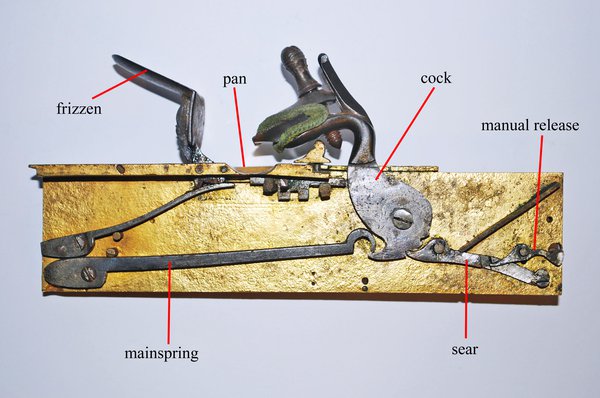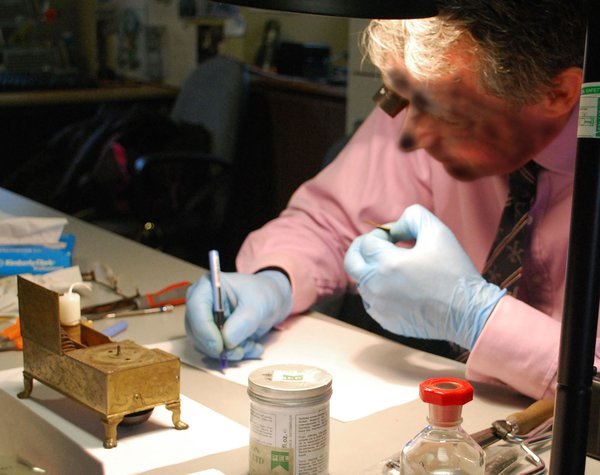Waking up with a bang
This post was written by Jonathan Betts
In my own time I am Adviser to the National Trust on the care and curatorship of their clocks and watches, and occasionally the Trust’s Advisers on different disciplines are called upon to work together.
Clocks and Firearms might seem an improbable combination, but one object in the Trust’s collections recently brought me and Brian Godwin (Adviser on Firearms) together for a most interesting study day.
Snowshill Manor, a house full of surprises, was, almost inevitably, the source of the object in question – a little gilt-brass table clock with alarm, made about 1740 and signed by Peter Mornier, London. The Trust has any number of clocks with alarm mechanisms, but this particular example has an additional feature, guaranteed to have the owner out of the deepest slumber in a trice.
As with most alarm clocks of the period, the clock sounds a bell at the appointed hour, but then, a flintlock mechanism is triggered and, with a flash and a bang, a lighted candle swings up from a compartment within, jack-in-a-box style, and illuminates the bedside. In fact, if the candle isn’t securely fixed in its swivelling socket inside the clock, there is a distinct possibility it is projected onto the bed itself, guaranteed to have the occupant up and about.


The mission of the two Advisers included a desire to see – and film – the clock working, if at all possible. Needless to say, careful preparation was required to ensure the clock itself was safe and the test was carried out in a brick-lined vault at the back of the Manor, although only a tiny quantity of black powder is needed to fuel the flintlock.
In the event however, not a single ignition took place, as the flintlock’s frizzen (the hardened steel plate against which the flint is supposed to strike the sparks) appeared to be too worn already, and would not oblige. It seems the clock has done its fair share of early morning duties over the years and is entitled to take an extended rest.
A few more experiments will take place to see if we can’t persuade it to perform just once more for the cameras; meanwhile further research on the clock, on Mornier, and on other examples of this kind, is underway and will be written up in Antiquarian Horology in due course.
